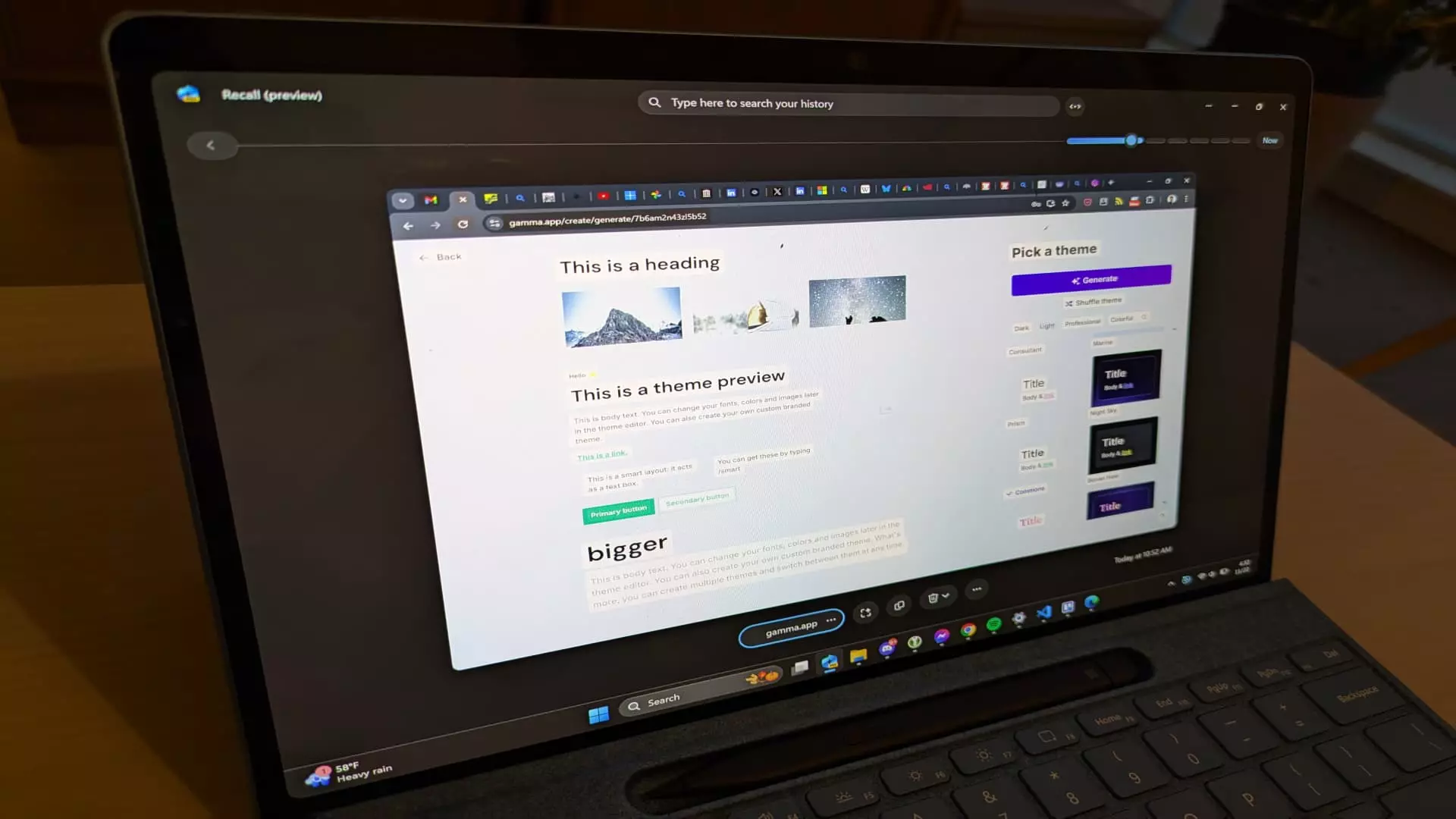Microsoft has recently introduced Recall, an innovative feature aimed at enhancing the workflow of users with Copilot+ PCs. Announced in May, Recall is designed to create a photographic memory of sorts for users running Windows 11, specifically on devices like the Surface Pro. At its core, Recall utilizes artificial intelligence (AI) to automatically take screenshots during user activity on the computer, enabling later retrieval of information through keyword searches. However, despite the excitement surrounding its rollout, early users have found that Recall does not fully live up to its promise.
Recall’s introduction has been a long time coming, with Microsoft initially showcasing it as a standout feature in 2023. However, privacy concerns raised by cybersecurity experts led the company to modify the feature significantly before its launch. This transition illustrates the delicate balance tech companies must maintain between innovation and user safety. To address these concerns, Microsoft encrypted the data associated with Recall and disabled the feature by default, ultimately demonstrating a commitment to cybersecurity even as it pushes for technological advancement.
Currently, Recall is only available on selected Copilot+ PCs equipped with Qualcomm Snapdragon chips and integrated neural processing units. Users must also be part of the Windows Insider Program and enrolled in the developer channel to access this feature. It is evident that Microsoft has chosen a selective approach, perhaps to ensure that the feature runs optimally on devices designed to handle the complexities of AI processing. Unfortunately, this exclusivity leaves users with Intel or AMD chips without access to this potentially transformative tool.
An initial evaluation of Recall reveals a myriad of performance issues that hinder its efficacy. Users expect a seamless, real-time recording of their activities once they enable the feature. However, screenshots can be taken sporadically, leading to gaps in captured data. Additionally, while the feature allows users to specify applications where screenshots should not be taken, certain widely-used applications on users’ devices may still be captured without notice. This inconsistency is frustrating and raises questions about its reliability in maintaining privacy and fulfilling user expectations.
The search functionality, which could significantly enhance Recall’s utility, also has notable shortcomings. Tasks that seem straightforward—like retrieving images linked to specific keywords—can lead to incomplete or inaccurate results. For example, if several images reference a particular term like “Yankees,” searching for it might only yield a select few, leaving important visual references obscured. This inconsistency undermines the primary purpose of Recall: to facilitate an efficient search experience.
Particular content types also pose problems for Recall. The feature can capture diverse types of media during browsing sessions, yet subsequent searches may fail to yield expected results. Users experimenting with different keywords have reported frustratingly low success rates when attempting to find certain captured images. This raises concerns over the feature’s ability to truly function as a reliable digital memory. While it effectively picked up an unrelated search term such as “one way,” it struggles conspicuously with items like environmental features or street signs, thereby questioning its usefulness in real-world applications.
Despite the numerous issues highlighted, Recall possesses the potential to be a genuinely useful tool for Microsoft users. When functioning correctly, it offers a unique way to revisit past digital experiences, with the capability to seamlessly redirect users to prior states of their tasks. However, overcoming existing hurdles will be crucial for Microsoft as it prepares to roll out Recall more widely. Ultimately, the feature represents an ambitious initiative, but its practical applications remain limited by its current limitations. Moving forward, continued development and enhancement will be vital to ensure Recall transforms from a promising concept into a reliable resource for its users.

